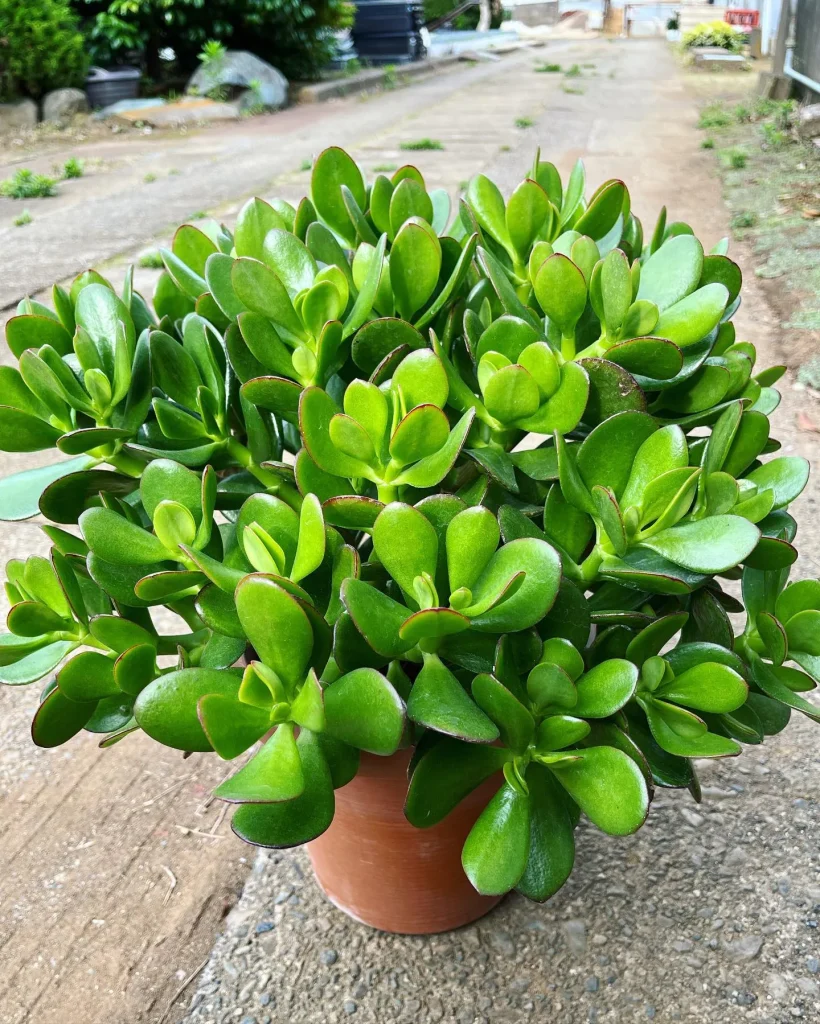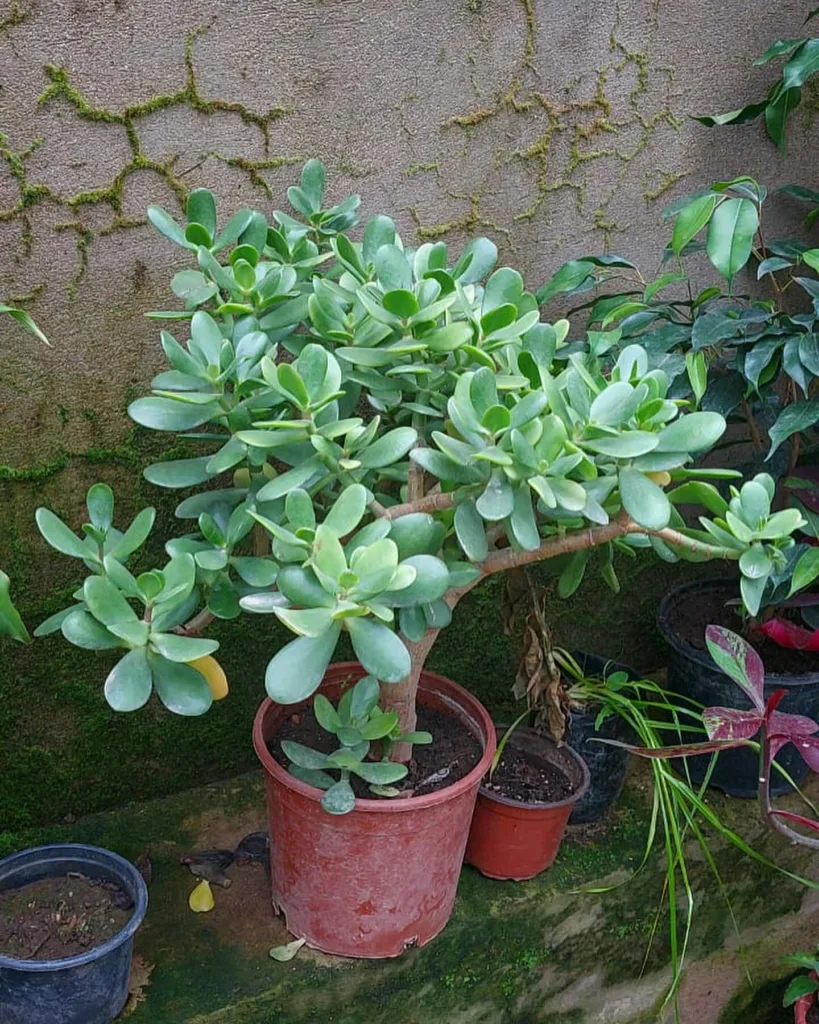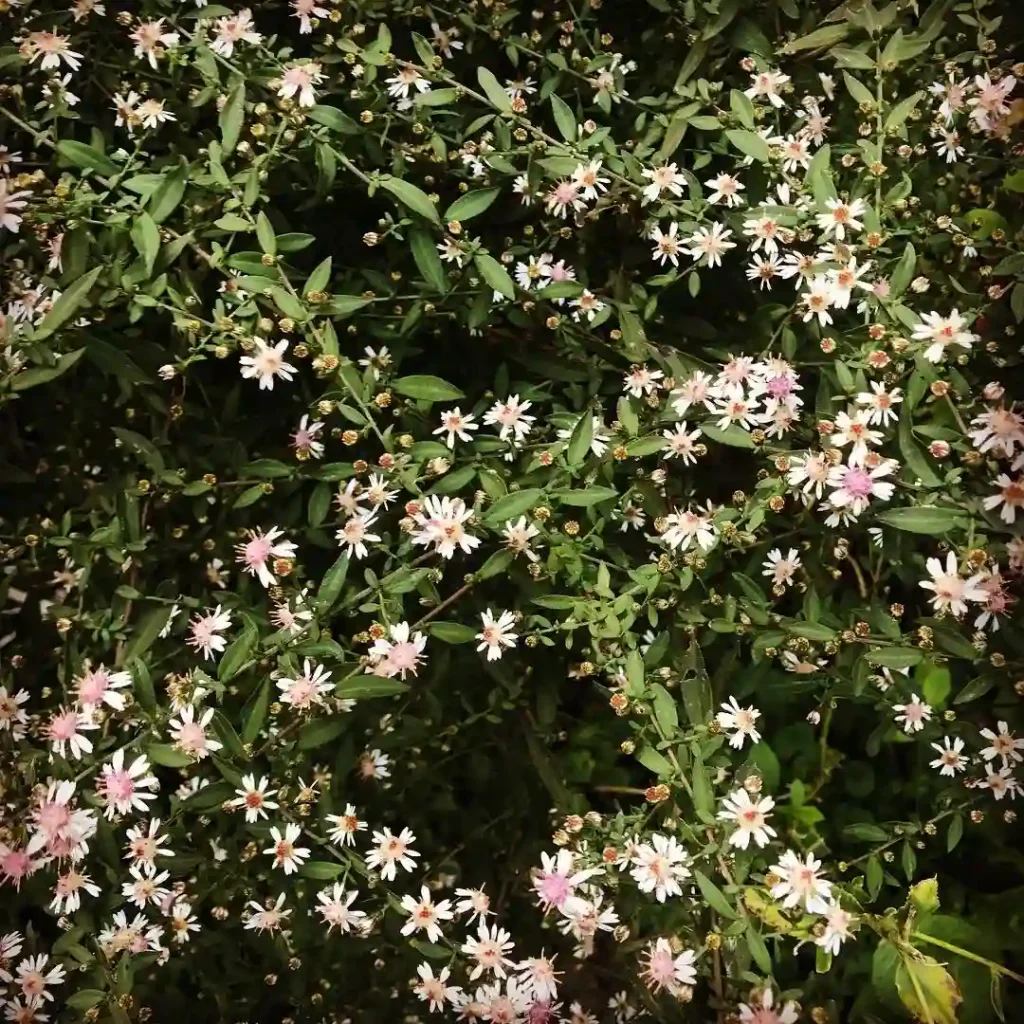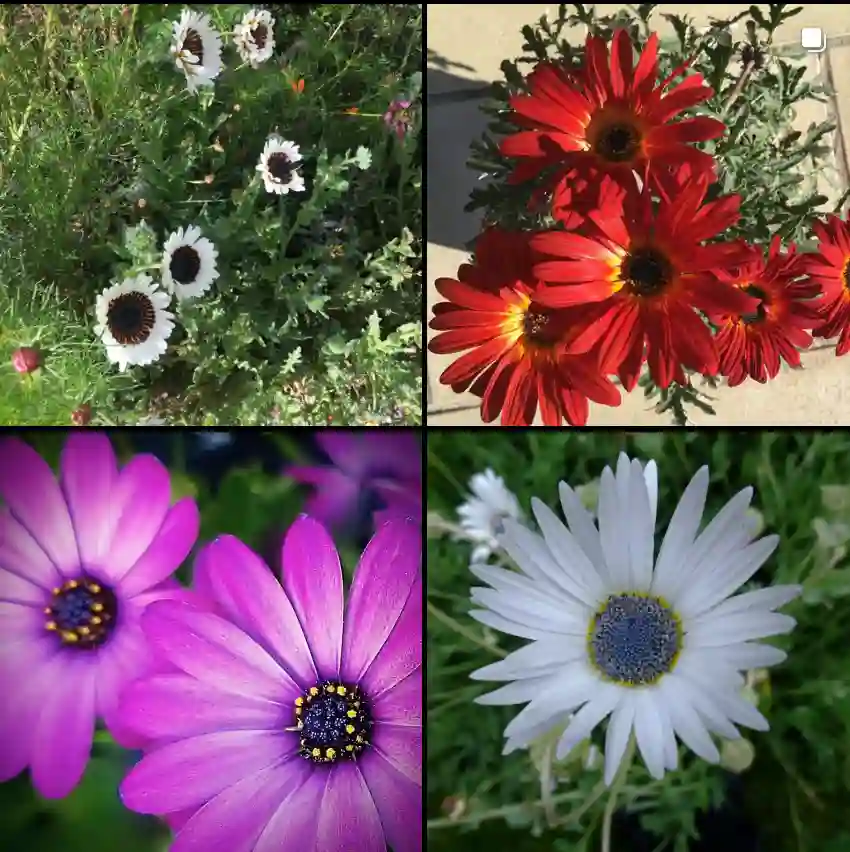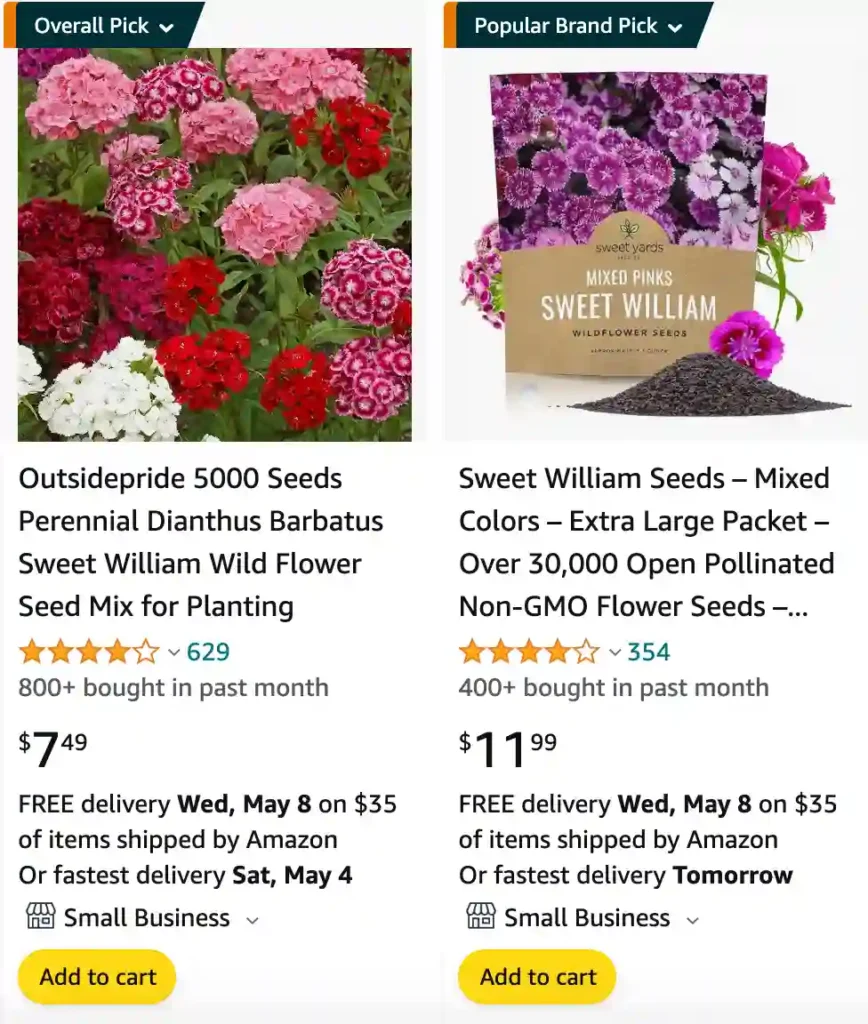
Dianthus: A Floral Fascination
As a plant enthusiast, I, Ferb Vu, am constantly captivated by the sheer diversity and beauty of the plant kingdom. One genus that has always held a special place in my heart is Dianthus. This diverse group of flowering plants, belonging to the Caryophyllaceae family, boasts a rich tapestry of colors, forms, and fragrances. From the delicate pinks that dot alpine meadows to the vibrant carnations that grace bouquets worldwide, Dianthus offers a delightful spectacle for the senses.
A World of Pinks
The name Dianthus, derived from the Greek words “dios” (divine) and “anthos” (flower), aptly reflects the exquisite beauty of these blooms. Commonly known as “pinks,” these flowers typically feature five petals, often with fringed or serrated edges, adding a touch of whimsy to their appearance. The foliage, typically blue-green and grass-like, provides a lovely contrast to the vibrant blossoms.
Dianthus is native to Europe and Asia, with a few species found in North Africa and southern Africa. They thrive in a variety of habitats, from rocky slopes to coastal dunes, demonstrating their adaptability and resilience. This hardiness, coupled with their undeniable charm, has made them a favorite among gardeners and florists alike.
A Kaleidoscope of Species
The Dianthus genus encompasses a vast array of species, each with its unique characteristics. Here are:
- Dianthus acantholimonoides Schischk.
- Dianthus acicularis Fisch. ex Ledeb.
- Dianthus acrochlorus Stapf
- Dianthus aculeatus Hamzaoğlu
- Dianthus afghanicus Rech.f.
- Dianthus agrostolepis Rech.f.
- Dianthus akdaghensis Gemici & Leblebici
- Dianthus albens Aiton
- Dianthus algetanus Graells ex F.N.Williams
- Dianthus alpinus L.
- Dianthus altaicus L.X.Dong & Chang Y.Yang
- Dianthus anatolicus Boiss.
- Dianthus ancyrensis Hausskn. & Bornm.
- Dianthus andronakii Woronow ex Schischk.
- Dianthus androsaceus (Boiss. & Heldr.) Hayek
- Dianthus angolensis Hiern ex F.N.Williams
- Dianthus angrenicus Vved.
- Dianthus angulatus Royle
- Dianthus angustifolia Charit.
- Dianthus antalyensis Fassou, N.Korotkova, Dimop. & Borsch
- Dianthus anticarius Boiss. & Reut.
- Dianthus arenarius L.
- Dianthus argentii (Meikle) ined.
- Dianthus armeria L.
- Dianthus arpadianus Ade & Bornm.
- Dianthus arrostoi C.Presl
- Dianthus × artignanii Sennen
- Dianthus aticii Hamzaoğlu
- Dianthus atlanticus Pomel
- Dianthus atschurensis Sosn.
- Dianthus austroiranicus Lemperg
- Dianthus awaricus Kharadze
- Dianthus aydogdui Menemen & Hamzaoğlu
- Dianthus aytachii C.Vural
- Dianthus balansae Boiss.
- Dianthus balbisii Ser.
- Dianthus barbatus L.
- Dianthus basianicus Boiss. & Hausskn.
- Dianthus basuticus Burtt Davy
- Dianthus × belkinii S.V.Smirn. & Shmakov
- Dianthus benearnensis Loret
- Dianthus berkayorum Kandemir, Aytaç & T.Ertuğrul
- Dianthus bessarabicus (Kleopow) Klokov
- Dianthus bicolor Adams
- Dianthus biflorus Sm.
- Dianthus bolusii Burtt Davy
- Dianthus borbasii Vandas
- Dianthus borbonicus Brullo, C.Brullo, Colombo, Giusso, Ilardi & R.Perrone
- Dianthus brachycalyx A.Huet & É.Huet ex Bacch., Brullo, Casti & Giusso
- Dianthus brevicaulis Fenzl
- Dianthus brevipetalus Vved.
- Dianthus broteri Boiss. & Reut.
- Dianthus brutius Brullo, Scelsi & Spamp.
- Dianthus burchellii Ser.
- Dianthus burdurensis Hamzaoğlu & Koç
- Dianthus busambrae Soldano & F.Conti
- Dianthus cachemiricus Edgew. & Hook.f.
- Dianthus caespitosus Thunb.
- Dianthus callizonus Schott & Kotschy
- Dianthus campestris M.Bieb.
- Dianthus candicus (P.W.Ball & Heywood) Madhani & Heubl
- Dianthus canescens K.Koch
- Dianthus capitatus J.St.-Hil.
- Dianthus carbonatus Klokov
- Dianthus carmelitarum Reut. ex Boiss.
- Dianthus carthusianorum L.
- Dianthus caryophyllus L.
- Dianthus caucaseus Sims
- Dianthus charidemi Pau
- Dianthus chimanimaniensis S.S.Hooper
- Dianthus chinensis L. Plant FAQs: Dianthus Chinensis
- Dianthus chouardii Dobignard
- Dianthus cibrarius Clementi
- Dianthus ciliatus Guss.
- Dianthus × cincinnatus Lem.
- Dianthus cinnamomeus Sm.
- Dianthus cintranus Boiss. & Reut.
- Dianthus collinus Waldst. & Kit.
- Dianthus corymbosus Sm.
- Dianthus costae Willk.
- Dianthus × courtoisii Rchb.
- Dianthus crenatus Thunb.
- Dianthus cretaceus Adams
- Dianthus crinitus Sm.
- Dianthus crossopetalus (Fenzl ex Boiss.) Grossh.
- Dianthus cruentus Griseb.
- Dianthus cyathophorus Moris
- Dianthus cyprius A.K.Jacks. & Turrill
- Dianthus cyri Fisch. & C.A.Mey.
- Dianthus daghestanicus Kharadze
- Dianthus darvazicus Lincz.
- Dianthus deltoides L.
- Dianthus denaicus Assadi
- Dianthus deserti Kotschy
- Dianthus desideratus Strid
- Dianthus diffusus Sm.
- Dianthus × digeneus Borbás
- Dianthus dilepis Rech.f.
- Dianthus diversifolius Assadi
- Dianthus dobrogensis Prodan
- Dianthus × dufftii Hausskn. ex Asch.
- Dianthus dumanii Hamzaoğlu
- Dianthus edetanus (M.B.Crespo & Mateo) M.B.Crespo & Mateo
- Dianthus elatus Bunge
- Dianthus elbrusensis Kharadze
- Dianthus elegans d’Urv.
- Dianthus elymaiticus Hausskn. & Bornm.
- Dianthus engleri Hausskn. & Bornm.
- Dianthus eretmopetalus Stapf
- Dianthus ernesti-mayeri Micevski & Matevski
- Dianthus erythrocoleus Boiss.
- Dianthus eugeniae Kleopow
- Dianthus excelsus S.S.Hooper
- Dianthus falconeri Edgew. & Hook.f.
- Dianthus × fallens Timb.-Lagr.
- Dianthus fasciculatus (Boiss.) Fassou, N.Korotkova, Dimop. & Borsch
- Dianthus ferrugineus Mill.
- Dianthus floribundus Boiss.
- Dianthus formanekii Borbás ex Formánek
- Dianthus fragrans Steven ex Adams
- Dianthus freynii Vandas
- Dianthus fruticosus L.
- Dianthus furcatus Balb.
- Dianthus gabrielianae Nersesian
- Dianthus galicicae Micevski
- Dianthus gasparrinii Guss.
- Dianthus genargenteus Bacch., Brullo, Casti & Giusso
- Dianthus giganteiformis (Borbás) Heinr.Braun
- Dianthus giganteus d’Urv.
- Dianthus glacialis Haenke
- Dianthus glutinosus Boiss. & Heldr.
- Dianthus goekayi Kaynak, Yılmaz & Daşkın
- Dianthus goerkii Hartvig & Å.Strid
- Dianthus gracilis Sm.
- Dianthus graminifolius C.Presl
- Dianthus graniticus Jord.
- Dianthus gratianopolitanus Vill.
- Dianthus grossheimii Schischk.
- Dianthus guessfeldtianus Muschl.
- Dianthus guliae Janka
- Dianthus guttatus M.Bieb.
- Dianthus gyspergerae Rouy
- Dianthus haematocalyx Boiss. & Heldr.
- Dianthus hafezii Assadi
- Dianthus halisdemirii Hamzaoğlu & Koç
- Dianthus hamzaoglui Koç
- Dianthus harrissii Rech.f.
- Dianthus helenae Vved.
- Dianthus × hellwigii Borbás ex Čelak.
- Dianthus × helveticorum M.Laínz
- Dianthus henteri Heuff. ex Griseb. & Schenk
- Dianthus hispidus (Boiss. & Balansa) Fassou, N.Korotkova, Dimop. & Borsch
- Dianthus holopetalus Turcz.
- Dianthus humilis Willd. ex Ledeb.
- Dianthus hymenolepis Boiss.
- Dianthus hypanicus Andrz.
- Dianthus hyrcanicus Rech.f.
- Dianthus hyssopifolius L.
- Dianthus ichnusae Bacch., Brullo, Casti & Giusso
- Dianthus illyricus (Ard.) Fassou, N.Korotkova, Dimop. & Borsch
- Dianthus imereticus (Rupr.) Schischk.
- Dianthus inamoenus Schischk.
- Dianthus ingoldbyi Turrill
- Dianthus inodorus (L.) Gaertn.
- Dianthus inoxianus Gallego
- Dianthus insularis Bacch., Brullo, Casti & Giusso
- Dianthus integer Vis.
- Dianthus integerrimus Bunge
- Dianthus jacobsii Rech.f.
- Dianthus jacquemontii Edgew. & Hook.f.
- Dianthus × jaczonis Asch.
- Dianthus japigicus Bianco & S.Brullo
- Dianthus japonicus Thunb.
- Dianthus jaroslavii Galushko
- Dianthus × javorkae Kárpáti
- Dianthus juniperinus Sm.
- Dianthus juzeptchukii M.L.Kuzmina
- Dianthus kapinaensis Markgr. & Lindtner
- Dianthus karami (Boiss.) Mouterde
- Dianthus karataviensis Pavlov
- Dianthus kastembeluensis Freyn & Sint.
- Dianthus khamiesbergensis Sond.
- Dianthus kirghizicus Schischk.
- Dianthus kiusianus Makino
- Dianthus klokovii Knjasev
- Dianthus knappii Asch. & Kanitz
- Dianthus koreanus D.C.Son & K.H.Lee
- Dianthus kremeri Boiss. & Reut.
- Dianthus kubanensis Schischk.
- Dianthus kuschakewiczii Regel & Schmalh.
- Dianthus kusnezowii Marcow.
- Dianthus lactiflorus Fenzl
- Dianthus laingsburgensis S.S.Hooper
- Dianthus lanceolatus Steven ex Rchb.
- Dianthus langeanus Willk.
- Dianthus laricifolius Boiss. & Reut.
- Dianthus legionensis (Willk.) F.N.Williams
- Dianthus leptoloma Steud. ex A.Rich.
- Dianthus leptopetalus Willd.
- Dianthus leucophaeus Sm.
- Dianthus leucophoeniceus Dörfl. & Hayek
- Dianthus libanotis Labill.
- Dianthus lindbergii Riedl
- Dianthus longicalyx Miq.
- Dianthus longiglumis Delile
- Dianthus longivaginatus Rech.f.
- Dianthus × lorberi Kubát & Abtová
- Dianthus × lucae Asch.
- Dianthus lusitanus Brot.
- Dianthus lydus Boiss.
- Dianthus macranthoides Hausskn. ex Bornm.
- Dianthus macranthus Boiss.
- Dianthus macroflorus Hamzaoğlu
- Dianthus magnipetala Charit.
- Dianthus mainensis Shaulo & Erst
- Dianthus × mansanetianus Mateo
- Dianthus marschallii Schischk.
- Dianthus martuniensis M.L.Kuzmina
- Dianthus masmenaeus Boiss.
- Dianthus mazanderanicus Rech.f.
- Dianthus × melandrioides Pau
- Dianthus membranaceus Borbás
- Dianthus mercurii Heldr.
- Dianthus micranthus Boiss. & Heldr.
- Dianthus microlepis Boiss.
- Dianthus micropetalus Ser.
- Dianthus moesiacus Vis. & Pančić
- Dianthus monadelphus Vent.
- Dianthus monspessulanus L.
- Dianthus morisianus Vals.
- Dianthus mossanus Bacch. & Brullo
- Dianthus moviensis F.N.Williams
- Dianthus muglensis Hamzaoğlu & Koç
- Dianthus multiceps Costa ex Willk.
- Dianthus multiflorus Deniz & Aykurt
- Dianthus multisquamatus F.N.Williams
- Dianthus multisquameus Bondarenko & R.M.Vinogr.
- Dianthus muschianus Kotschy ex Boiss.
- Dianthus myrtinervius Griseb.
- Dianthus namaensis Schinz
- Dianthus nangarharicus Rech.f.
- Dianthus nanshanicus Chang Y.Yang & L.X.Dong
- Dianthus nardiformis Janka
- Dianthus nezahatiae Hamzaoğlu
- Dianthus nihatii Güner
- Dianthus nitidus Waldst. & Kit.
- Dianthus nodosus Tausch
- Dianthus nudiflorus Griff.
- Dianthus oliastrae Bacch., Brullo, Casti & Giusso
- Dianthus orientalis Adams
- Dianthus oschtenicus Galushko
- Dianthus × ossetianus P.P.Ferrer & E.Laguna
- Dianthus pachygonus (Fisch. & C.A.Mey.) Fassou, N.Korotkova, Dimop. & Borsch
- Dianthus paghmanicus Rech.f.
- Dianthus palinensis S.S.Ying
- Dianthus pallens M.Bieb.
- Dianthus pamiralaicus Lincz.
- Dianthus pancicii Velen.
- Dianthus patentisquameus Bondarenko & R.M.Vinogr.
- Dianthus pavlovii Lazkov
- Dianthus pavonius Tausch
- Dianthus pelviformis Heuff.
- Dianthus pendulus Boiss. & C.I.Blanche
- Dianthus persicus Hausskn.
- Dianthus petraeus Waldst. & Kit.
- Dianthus pinifolius Sm.
- Dianthus plumarius L. Plant FAQs: Dianthus Plumarius
- Dianthus plumbeus Schischk.
- Dianthus polycladus Boiss.
- Dianthus polylepis Bien. ex Boiss.
- Dianthus polymorphus M.Bieb.
- Dianthus praecox Willd. ex Spreng.
- Dianthus pratensis M.Bieb.
- Dianthus pseudarmeria M.Bieb.
- Dianthus pseudocrinitus Behrooz. & Joharchi
- Dianthus pseudorigidus (Hub.-Mor.) Fassou, N.Korotkova, Dimop. & Borsch
- Dianthus pungens L.
- Dianthus purpureimaculatus Podlech
- Dianthus pygmaeus Hayata
- Dianthus pyrenaicus Pourr.
- Dianthus quadridentatus (Sm.) Fassou, N.Korotkova, Dimop. & Borsch
- Dianthus raddeanus Vierh.
- Dianthus ramosissimus Pall. ex Poir.
- Dianthus raridentata Charit.
- Dianthus recta Charit.
- Dianthus recticaulis Ledeb.
- Dianthus repens Willd.
- Dianthus rigidus M.Bieb.
- Dianthus robustus Boiss. & Kotschy
- Dianthus roseoluteus Velen.
- Dianthus rudbaricus Assadi
- Dianthus rupicola Biv.
- Dianthus ruprechtii Schischk. ex Grossh.
- Dianthus sachalinensis Barkalov & Prob.
- Dianthus saetabensis Rouy
- Dianthus sahandicus Assadi
- Dianthus sancarii Hamzaoğlu & Koç
- Dianthus sardous Bacch., Brullo, Casti & Giusso
- Dianthus × saxatilis F.W.Schmidt
- Dianthus scaber Chaix
- Dianthus scardicus Wettst.
- Dianthus schemachensis Schischk.
- Dianthus seguieri Vill.
- Dianthus seidlitzii Boiss.
- Dianthus semenovii (Regel & Herder) Vierh.
- Dianthus seravschanicus Schischk.
- Dianthus serotinus Waldst. & Kit.
- Dianthus serpentinus Hamzaoğlu
- Dianthus serratifolius Sm.
- Dianthus serrulatus Desf.
- Dianthus sessiliflorus Boiss.
- Dianthus setisquameus Hausskn. & Bornm.
- Dianthus shinanensis (Yatabe) Makino
- Dianthus siculus C.Presl
- Dianthus simulans Stoj. & Stef. ex Stef. & Jordanov
- Dianthus sinaicus Boiss.
- Dianthus siphonocalyx Blakelock
- Dianthus somanus Oskay
- Dianthus sphacioticus Boiss. & Heldr.
- Dianthus spiculifolius Schur
- Dianthus squarrosus M.Bieb.
- Dianthus stamatiadae Rech.f.
- Dianthus stapfii Lemperg
- Dianthus stellaris Camarda
- Dianthus stenocephalus Boiss.
- Dianthus stenopetalus Griseb.
- Dianthus stepanovae Barkalov & Prob.
- Dianthus sternbergii Sieber ex Capelli
- Dianthus stramineus Boiss. & Heldr.
- Dianthus stribrnyi Velen.
- Dianthus strictus Banks & Sol.
- Dianthus strymonis Rech.f.
- Dianthus subacaulis Vill.
- Dianthus subaphyllus (Lemperg) Rech.f.
- Dianthus × subfissus Rouy & Foucaud
- Dianthus subscabridus Lincz.
- Dianthus subulosus Conrath & Freyn
- Dianthus superbus L.
- Dianthus sylvestris Wulfen
- Dianthus szowitsianus Boiss.
- Dianthus takhtajanii Nersesian
- Dianthus talyschensis Boiss. & Buhse
- Dianthus taoshanensis S.S.Ying
- Dianthus tarentinus Lacaita
- Dianthus tenuiflorus Griseb.
- Dianthus thunbergii S.S.Hooper
- Dianthus tlaratensis Husseinov
- Dianthus toletanus Boiss. & Reut.
- Dianthus transcaucasicus Schischk.
- Dianthus transvaalensis Burtt Davy
- Dianthus trifasciculatus Kit. ex Schult.
- Dianthus tripunctatus Sm.
- Dianthus tymphresteus (Boiss. & Spruner) Heldr. & Sartori ex Boiss.
- Dianthus ucarii Hamzaoğlu & Koç
- Dianthus ugamicus Vved.
- Dianthus uniflorus Forssk.
- Dianthus uralensis Korsh.
- Dianthus urumoffii Stoj. & Acht.
- Dianthus uzbekistanicus Lincz.
- Dianthus vanensis Behçet & İlçim
- Dianthus varankii Hamzaoğlu & Koç
- Dianthus vigoi M.Laínz
- Dianthus virgatus Pasq.
- Dianthus virgineus L.
- Dianthus viridescens Clementi
- Dianthus viscidus Bory & Chaub.
- Dianthus vladimirii Galushko
- Dianthus volgicus Juz.
- Dianthus vulturius Guss. & Ten.
- Dianthus × warionii Bucq. & Timb.-Lagr.
- Dianthus webbianus Parl. ex Vis.
- Dianthus woroschilovii Barkalov & Prob.
- Dianthus xylorrhizus Boiss. & Heldr.
- Dianthus yilmazii Hamzaoğlu & Koç
- Dianthus zangezuricus Nersesian
- Dianthus zederbaueri Vierh.
- Dianthus zeyheri Sond.
- Dianthus zonatus Fenzl
Do deer eat dianthus?
I can’t say for certain deer devour every dianthus plant they come across, but mine have always been left happily blooming. Maybe it’s because they’re nestled amongst the lavender and rosemary – those prickly herbs definitely seem to keep the deer at bay. Plus, the dianthus themselves have a bit of a spicy, clove-like scent, which I imagine isn’t the most appealing deer buffet. So far, my colorful dianthus haven’t been a target, and they share the garden peacefully with the other plants.
Are dianthus poisonous to cats?
While my curious cat loves batting at dangling leaves, I try to keep dianthus out of reach just to be safe. I read online that dianthus can irritate their little tummies if they ingest them, causing throwing up and diarrhea. No fun for anyone! It’s not the worst thing in the world, but definitely not pleasant. My cat is a nibbler by nature, so I don’t want to take any chances. Besides, there are plenty of safer cat-approved plants like catnip that keep her entertained.
Are dianthus poisonous to dogs?
Ugh, you wouldn’t believe the scare I had last year with the dianthus and Buster, the goofy golden retriever next door. He’s a total walking vacuum cleaner when it comes to anything in the yard, and one day I saw him snatch a mouthful of dianthus blooms. I panicked! I remembered reading somewhere that dianthus can be bad for dogs, causing vomiting, diarrhea, and even worse symptoms.
Luckily, Buster ended up being okay. He seemed a little unsettled for a while, but after a good walk and a bowl of water, he was back to his usual happy self. That incident definitely gave me a wake-up call though. Now I keep a close eye on both the dog and the dianthus, and maybe I’ll plant them in hanging baskets where curious canine noses can’t reach!
Do rabbits eat dianthus?
Those darn rabbits! They seem to have a sixth sense for anything tasty in my garden, and dianthus is no exception. For a while, I just couldn’t understand why my beautiful blooms kept getting chomped on. Fragrant roses? Mostly untouched. Boring old hostas? Left alone. But the dianthus, with their colorful frilly petals? Rabbit buffet apparently. I did some research and learned that while dianthus isn’t their absolute favorite, rabbits will definitely munch on them if they’re hungry enough. The struggle is real! Now I’m on the lookout for some rabbit repellent to protect my precious dianthus and keep those furry nibblers at bay.
How to care for dianthus in pots?
My dianthus in pots are some of the easiest bloomers I have! Here’s what works for me: first, I find a nice sunny spot for them. They seem happiest with at least 6 hours of sun a day, though afternoon shade in the hottest parts of summer can’t hurt either. For watering, I stick my finger in the soil – if the top inch feels dry, it’s watering time. They don’t like soggy roots, so I avoid overwatering. When it comes to food, a little fertilizer every few weeks keeps them going strong, but I don’t overdo it. Deadheading, or removing spent flowers, is also key. It encourages more blooms and keeps the plant looking tidy throughout the season. That’s my dianthus care routine – lots of sun, moderate watering, a sprinkle of fertilizer, and deadheading for non-stop blooms!
Are dianthus edible?
You won’t believe how pretty my dianthus salads turn out! They add the most amazing pop of color, and the petals have this delightful spicy, clove-like flavor. I usually just pick the individual florets and toss them in with the lettuce, tomatoes, and cucumbers. They’re also fantastic for fancy desserts – imagine a beautiful cupcake topped with a single, perfect dianthus bloom! Just make sure you get your dianthus from a source that’s meant for eating, not treated with pesticides. They’re such a versatile little flower, not just gorgeous but delicious too!
How to propagate dianthus?
Propagating dianthus is actually quite easy, and it’s so rewarding to see those little cuttings turn into thriving new plants! My favorite method is by stem cuttings. Usually in spring or early summer, I find a healthy shoot that’s not flowering. Sharp scissors are key here – I want a clean cut at an angle, just below a leaf node (that bumpy area where the leaf meets the stem). I remove the lower leaves on the cutting, leaving a few at the top. Some people recommend dipping the cut end in rooting hormone, but I haven’t found it necessary. Then, I pot them up in a mixture of potting soil and perlite for good drainage. I water them well and keep them in a bright spot with indirect sunlight. A clear plastic bag or cloche can help trap moisture while they root. Be patient – it can take a few weeks, but eventually you’ll see new growth! Once the roots are established, I harden them off by gradually introducing them to more sunlight and outdoor conditions before transplanting them to their permanent home in the garden. It’s like flowery magic!
Do bees like dianthus?
Absolutely! My dianthus are always buzzing with happy bees. They’re like little jewel-toned beacons for these busy pollinators. The blooms seem to be the perfect size and shape for them to land easily, and the fragrance? It’s intoxicating! I love watching them bumble around collecting pollen, flitting from flower to flower. It’s a beautiful ballet and a reminder of the vital role flowers like dianthus play in the ecosystem. Plus, healthy bee populations mean more fruits and vegetables in my garden – a win-win situation! So yes, bees love dianthus, and my garden is all the richer for it.
Do dianthus attract butterflies?
The jury’s still out on dianthus for butterflies in my garden. I’ve definitely seen butterflies fluttering around the yard, but they seem more drawn to the big, showy blooms like the coneflowers and butterfly bushes. Dianthus flowers are smaller and flatter, maybe not the most inviting landing pad for a butterfly. That being said, I have occasionally spotted a butterfly perched on a dianthus, particularly the lighter colored varieties like white or pink. Perhaps the fragrance is what attracts them?
I read online that some dianthus varieties, especially single blooms rather than the double ones, are more butterfly-friendly. Maybe next year I’ll try planting a patch of single dianthus in a sunny spot and see if it makes a difference. One thing’s for sure, butterflies are welcome visitors in my garden, so anything I can do to attract them is worth a try!
Do dianthus attract hummingbirds?
In my experience, dianthus aren’t the biggest hummingbird magnets. They tend to favor flowers with long, tubular shapes like trumpet vines and bee balm, which make it easier for them to reach the nectar. Dianthus flowers are wider and flatter, so the sweet stuff probably isn’t as accessible for those little hummers.
That being said, I’ve occasionally glimpsed a hummingbird hovering by the dianthus on a particularly hot day. Maybe the vibrant colors catch their eye, or perhaps they’re just desperate for any source of nectar in the scorching heat. While they’re not dianthus’ main fans, I wouldn’t be surprised if they gave them a shot in a pinch.
If attracting hummingbirds is your top priority, there are definitely better flower choices out there. But hey, if you have some dianthus in your garden, they might just provide a welcome refreshment for a thirsty hummingbird on a hot summer day.
Do dianthus rebloom?
Absolutely! Dianthus can be fantastic repeat bloomers, with the right care. They’ll give you a big burst of flowers in spring or early summer, but that doesn’t have to be the end of the show. Here’s the trick: deadheading! Once those first blooms start to fade, don’t just let them flop around on the plant. Gently snip them off with scissors, cutting down to a healthy leaf node. This tells the plant to focus its energy on producing new flowers instead of wasting it on ripening seeds. With a little deadheading and some regular watering and feeding, you can keep those dianthus blooming all through summer and sometimes even into early fall. It’s like having a little floral party going on in your garden all season long!
Cultivating Beauty
The allure of Dianthus extends beyond its ornamental value. These plants are relatively easy to cultivate, making them a popular choice for gardeners of all levels of experience. They prefer well-drained soil and thrive in sunny locations. Regular deadheading can encourage repeat blooming, ensuring a continuous display of their captivating flowers.
Whether adorning a vase, gracing a garden border, or adding a splash of color to a rocky landscape, Dianthus species bring joy to both the cultivator and the admirer. Their beauty, fragrance, and adaptability make them a true treasure in the plant kingdom.
As I continue to explore the world of horticulture, I am constantly amazed by the diversity and resilience of plant life. Dianthus, with its myriad forms and captivating beauty, serves as a constant reminder of the wonders that nature has to offer.
If i die, water my plants!
